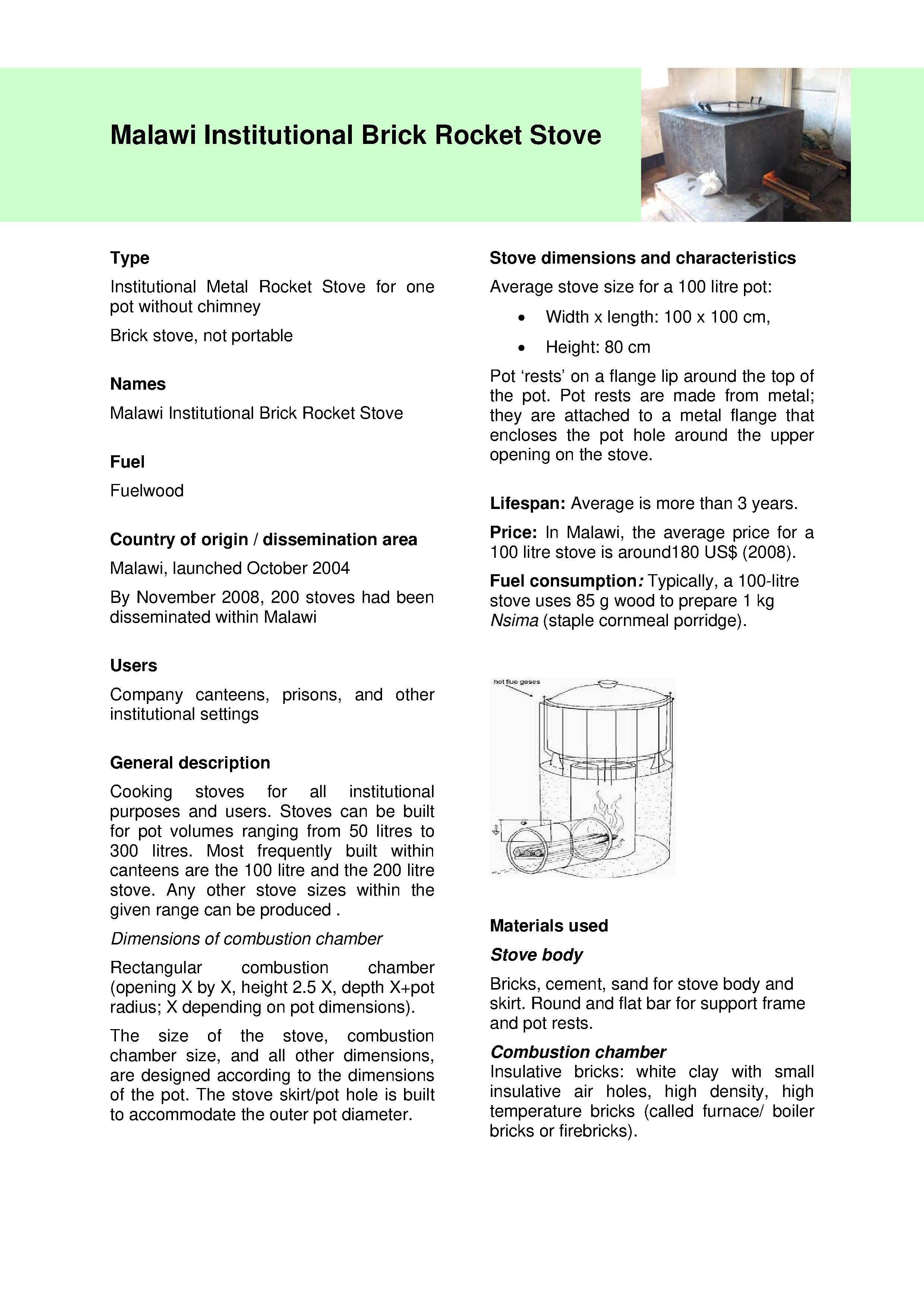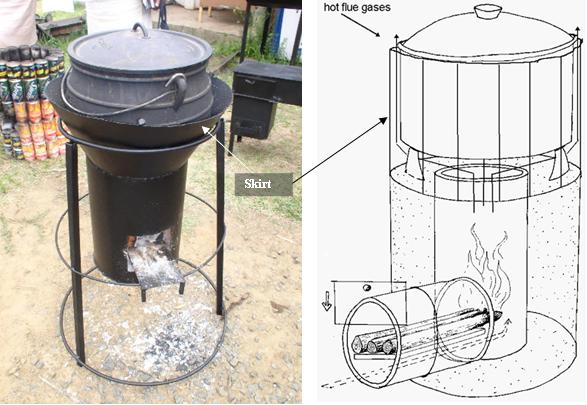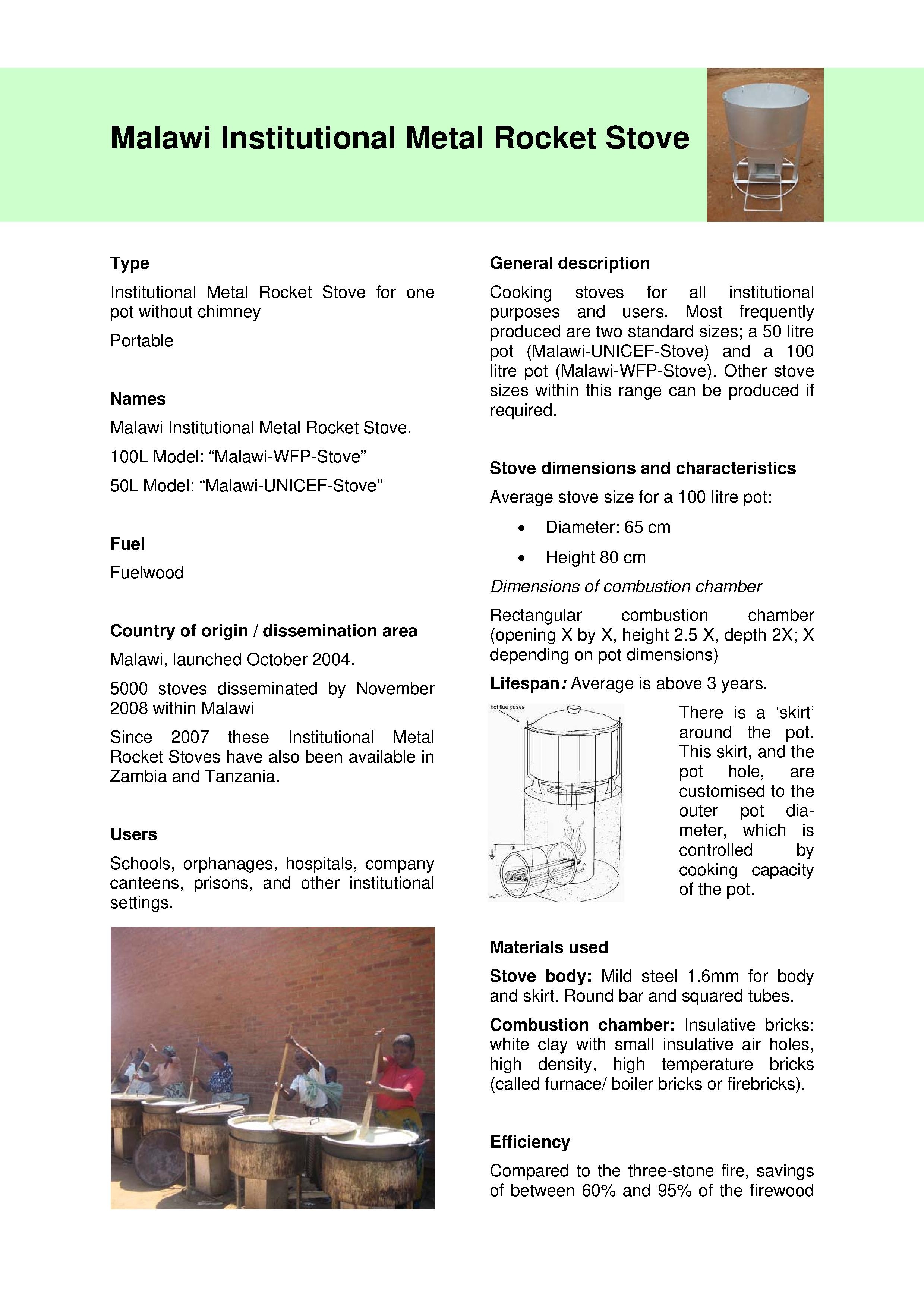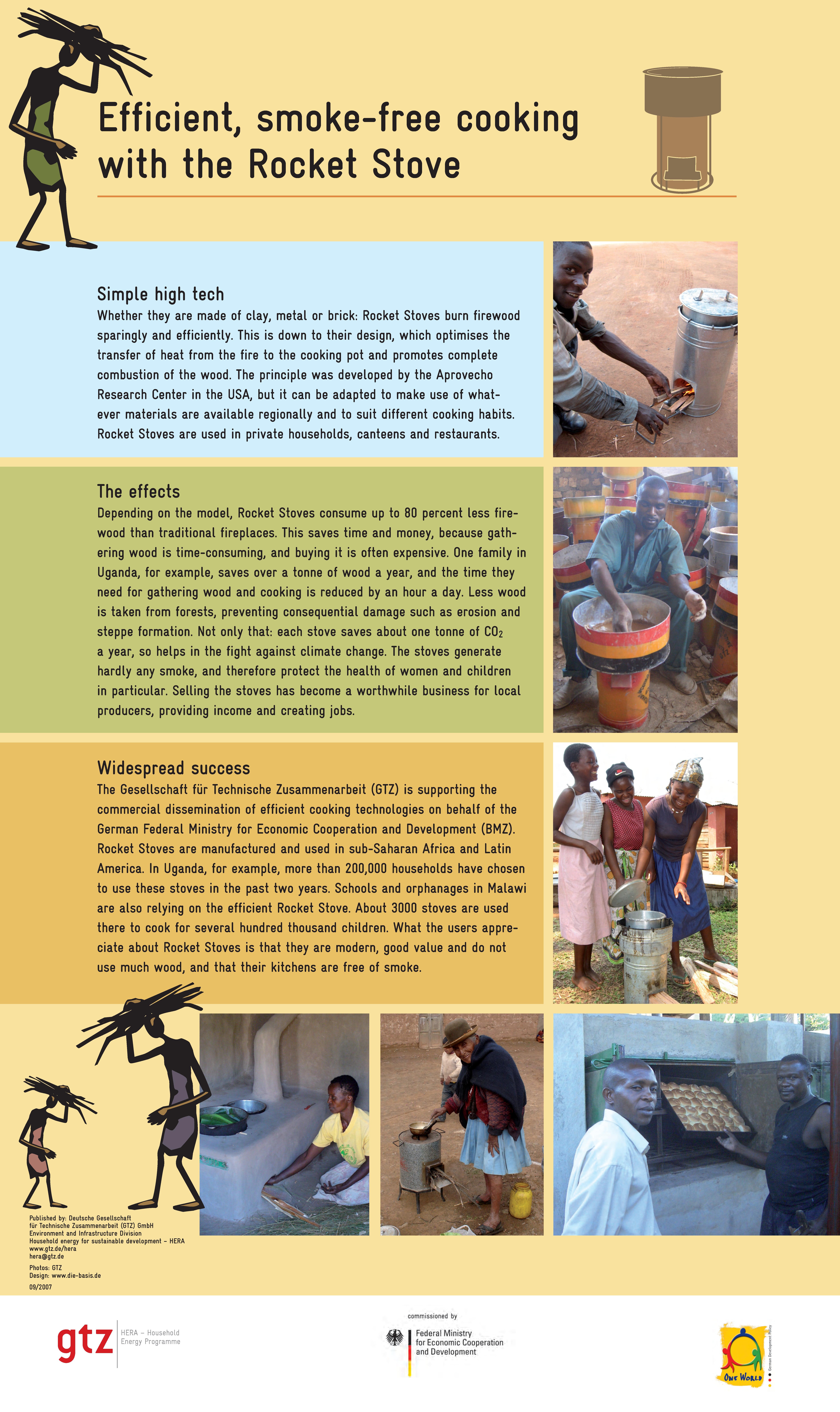Firewood Cookstoves
==> Back to Overview GIZ HERA Cooking Energy Compendium
Types of woodfuel stoves
Wood stoves
Improved woodstoves are found in many shapes and sizes. However, to achieve overall efficiency, there are two key technical principles that are always the same:
- improved combustion (getting the fuel/air mix correct and the temperature high quickly)
- improved heat transfer to the pot (loosing as little as possible of the heat to the surrounding air)
The best stoves optimize both heat transfer and combustion efficiency at the same time. Increased heat transfer reduces fuel requirements, whereas increased combustion efficiency reduces fuel requirements and decreases harmful emissions. The organisation Aprovecho (a NGO in the US), provides a detailed description of how to achieve this two principles in their book; Design Principles for Wood Burning Cook Stoves (http://www.aprovecho.org ).
The Rocket Stove Principle
One of the most successful new concepts in stove design is the rocket stove principle.
- It has a tall combustion chamber which behaves a bit like a chimney; creating more draught than a standard stove. This assists in mixing the air, fuel particles and volatiles, resulting in a hot flame. The internal walls are insulated, reflecting all the heat back into the chamber rather than losing it to the stove body. The insulation keeps everything very hot so that the chemical reaction is more intense, whilst the tall chamber provides more time in which the gases and particles can be burnt completely, giving out all their heat and discharging mainly carbon dioxide and water vapour.
- These hot flue gases pass through a well defined gap between a ‘skirt’, and the pot, as shown in the illustrations given below, resulting in a large percentage of the heat being forced against the sides of the pot, and being transferred to the pot. Where various sizes of pot are used on the same stove, the skirt can be funnel-shaped to accommodate different pots, although some efficiency will be lost.
- An elbow-shaped combustion chamber, with a shelf for the fuel wood, supports the pre-drying of the firewood and allows a controlled, and sufficient, flow of primary air to be warmed as it passes under the wood to the burning wood tips.
The rocket stove principle. Source: Aprovecho
Design principles, which can be used more generally include:
- Insulation around the fire and along the entire heat flow path using lightweight, heat resistant materials
- A well-controlled, uniform draught in the burning chamber during the entire combustion process
- Use of a grate or a shelf under the firewood
- Heat transfer maximised by the insertion of the pot into the stove body or using a skirt around the pot.
A rocket-type stove in action, and showing insulation of the burning chamber, skirt around pot and support frame. Source: GTZ / Aprovecho Institute
Today most of the GTZ-promoted high-efficiency wood stoves follow this rocket stove principle (see fact sheets for the examples):

|
Two pot rocket Lorena, Uganda (2008) |
| Draft shielded fire stove fact sheet.pdf | One-Pot Rocket Mud Stove, Shielded Fire, Uganda (2008) |
| File:En-GTZ-Uganda Rocket Institutional-2006.pdf |
Rocket Institutional Stove, Uganda (2006) |
| Institutional Metal Rocket Stove, Malawi (2008) | |

|
Malawi Institutional Brick Rocket Stove, Malawi (2008) |
| Draft inkawasina-stove peru-k2-e2-lisa1.pdf |
The Inkawasi Stove, Peru (2008) |























